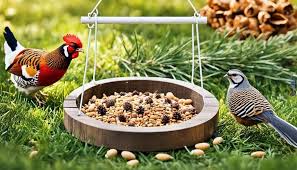Skyline Intruders: How to Keep Birds from Nesting Where They Shouldn't!

Birds
Size & shape: Varies widely; common pest species like pigeons are medium-sized (30-35 cm) with stout bodies.
Coloration: Often gray, brown, or black with species-specific markings; pigeons may have iridescent neck feathers.
Beak & Feet: Short to medium-sized beaks for pecking; feet equipped with sharp claws and three forward-facing toes.
- Often found in flocks; vocal, with repetitive calls or cooing, especially near feeding or nesting sites.

Feeding Preferences
Birds in city settings often exploit a wide range of available food sources to sustain themselves. They are frequently seen scavenging for discarded scraps near eateries, markets, or residential areas. Many rely on grains, seeds, and cereals, often sourced from spilled goods or intentionally provided by people. Sweet items such as fruit peels or sugary residues also attract them, particularly in areas with outdoor waste bins. Insects are another key component of their diet, offering a protein-rich option, especially for smaller species. Additionally, birds can adapt to consume processed foods and leftover human meals, making urban locations a thriving ground for their foraging habits.

Habitat
Birds in cities often establish their living spaces in areas that offer both safety and proximity to resources. Commonly, they occupy rooftops, ledges, and balconies, taking advantage of elevated locations that mimic natural cliffs and provide protection from predators. They are also known to nest in crevices, drain pipes, and gaps within buildings, where they find shelter from harsh weather conditions. Public spaces like parks and green belts offer trees and shrubs that serve as nesting sites and provide cover. In industrial zones, open warehouses or abandoned structures often become their preferred locations due to reduced human disturbance. Urban environments offer a diverse range of spaces that allow birds to thrive, often integrating into human-made structures seamlessly.

UPM's AIR Approach for Birds:
- Assess: Inspect your property for signs of bird activity, such as nests, droppings, and noise. Focus on areas where birds are likely to roost, such as ledges, roofs, and gutters. Assess the potential risks of property damage, contamination, and disease spread.
- Implement: Use targeted bird control methods such as bird spikes, netting, and visual or sound deterrents to prevent birds from roosting and nesting. Remove food sources by securely covering garbage bins and cleaning up outdoor dining areas. If necessary, consider professional bird removal services for severe infestations.
- Review: Regularly monitor your property for signs of continued bird activity and adjust control methods as needed. Continue preventive measures such as maintaining bird deterrents, keeping food sources secure, and cleaning areas prone to bird nesting to prevent future infestations.
Frequently Asked Questions
Birds often congregate in areas where food sources are abundant, such as public parks, open markets, or near waste disposal sites.
Birds can contaminate surfaces with droppings, spread diseases, and potentially damage infrastructure through nesting and pecking.
Bird activity peaks during breeding and migration seasons, typically in spring and fall, when they seek nesting sites or move between regions.
Signs include frequent bird activity, accumulation of nesting materials like twigs and leaves, and the presence of droppings in concentrated areas.
Yes, birds can block gutters with nests, corrode surfaces with acidic droppings, and even weaken structures by nesting in unsuitable areas.
Many bird species are protected by local and international wildlife conservation laws, but regulations vary depending on the species and location.
Installing deterrents like spikes, netting, or ultrasonic devices can help, as well as sealing off entry points and managing food waste effectively.